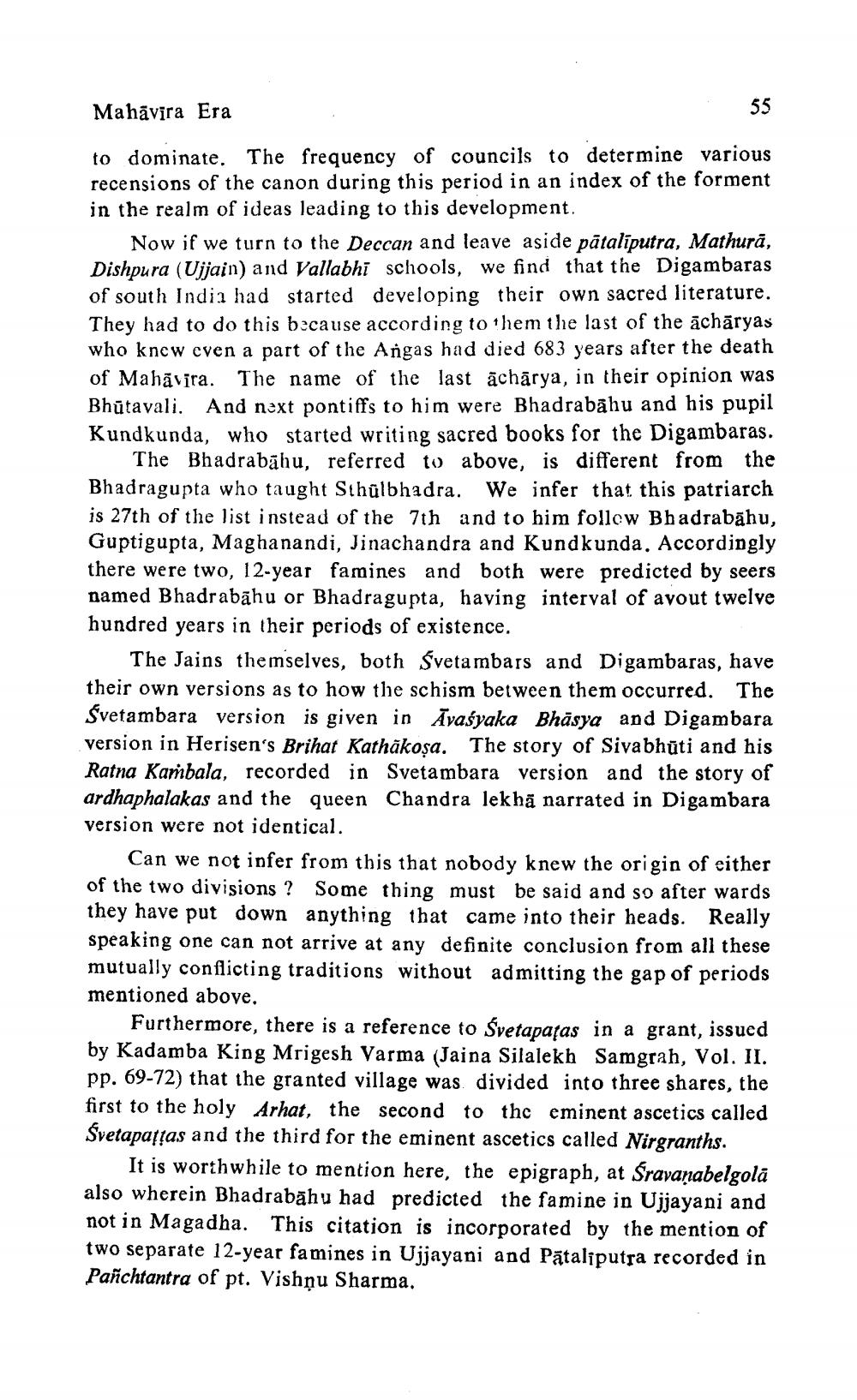________________
55
Mahāvira Era
to dominate. The frequency of councils to determine various recensions of the canon during this period in an index of the forment in the realm of ideas leading to this development.
Now if we turn to the Deccan and leave aside pătalīputra, Mathurā, Dishpura (Ujjain) and Vallabhi schools, we find that the Digambaras of south India had started developing their own sacred literature. They had to do this because according to them the last of the achāryas who know even a part of the Angas had died 683 years after the death of Mahāvīra. The name of the last ächārya, in their opinion was Bhūtavali. And next pontiffs to him were Bhadrabāhu and his pupil Kundkunda, who started writing sacred books for the Digambaras.
The Bhadrabāhu, referred to above, is different from the Bhadragupta who taught Sthülbhadra. We infer that this patriarch is 27th of the list instead of the 7th and to him follow Bhadrabāhu, Guptigupta, Maghanandi, Jinachandra and Kundkunda. Accordingly there were two, 12-year famines and both were predicted by seers named Bhadrabāhu or Bhadragupta, having interval of avout twelve hundred years in their periods of existence.
The Jains themselves, both Sveta mbars and Digambaras, have their own versions as to how the schism between them occurred. The Šívetambara version is given in Āvaśyaka Bhāsya and Digambara version in Herisen's Brihat Kathakosa. The story of Sivabhūti and his Ratna Kambala, recorded in Svetambara version and the story of ardhaphalakas and the queen Chandra lekhã narrated in Digambara version were not identical.
Can we not infer from this that nobody knew the origin of either of the two divisions ? Some thing must be said and so after wards they have put down anything that came into their heads. Really speaking one can not arrive at any definite conclusion from all these mutually conflicting traditions without admitting the gap of periods mentioned above.
Furthermore, there is a reference to Svetapaļas in a grant, issued by Kadamba King Mrigesh Varma (Jaina Silalekh Samgrah, Vol. II. pp. 69-72) that the granted village was divided into three shares, the first to the holy Arhat, the second to the eminent ascetics called Svetapastas and the third for the eminent ascetics called Nirgranths.
It is worthwhile to mention here, the epigraph, at Śravanabelgola also wherein Bhadrabāhu had predicted the famine in Ujjayani and not in Magadha. This citation is incorporated by the mention of two separate 12-year famines in Ujjayani and Pätalıputra recorded in Panchtantra of pt. Vishnu Sharma.




